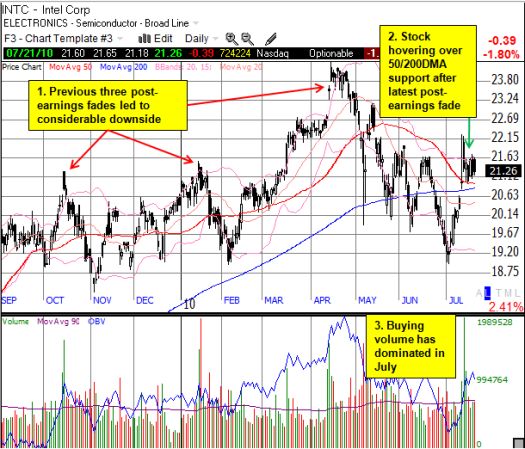Day-to-day, Mr. Market’s mood seems to swing dramatically up and down with little consistent rhyme or reason. The neat rationalizations of the bulls one day give way to the equally neat rationalizations of the bears the next day.
For example, the market is very undervalued because of record low Treasury bill rates, highly stimulative monetary policy, and massive amounts of cash (some $1.2 TRILLION as of February) on corporate balance sheets. All the idling cash has to go to work for higher returns sooner than later. The market is way overvalued because record low Treasury bill rates and massive amounts of cash signal that the market anticipates a devastating deflation which will crush revenues and profits. The on-going stimulative stance of the Federal Reserve proves that monetary policy has been rendered ineffective in pushing the string any further. Low P/E multiples are already discounting the worst possible scenario for economic recovery — and low P/E multiple are still not low enough given the depths they have explored during past periods of economic malaise.
Finally, the market’s obsession with negative macro-economic catalysts neglects the on-going profit growth of American companies and robust growth in developing economies. These profits will eventually power the global economy higher (led by China of course). Then again, the negative macro-economic catalysts threaten to bring the global economy to a halt just as they did in 2008 (albeit minus widening credit spreads), the current profits are lagging indicators of a temporary bounce from the bottom.
Each time I hear the arguments of one side or another, I find myself seeing the merits of the bull and the bear cases. But then I turn to the charts to see how folks are behaving who are putting real money at risk. I am only certain of the market’s observable behavior – and I have not liked it for quite some time even as I continue to reach for longs during oversold periods. First and foremost, the S&P 500 remains stuck in a downtrend from the April highs. This downtrend is now well-defined by the declining 50-day moving average (DMA) as the index prints lower highs and lower lows. My earlier assumption that the market would mark the summer trapped in a trading range remains unconfirmed – the market has yet to hold at a support line.

We are now going through our sixth earnings season since the March, 2009 lows. All but the first earnings period have been marred by negative market reactions with notable corrections leading into earnings or immediately following earnings. Throw some low-volume rallies in between these periods, and the stock market has managed to stay aloft and cling to the majority of its post-bounce gains. The stock market is right where it was at its highs last September, ten months ago. Just three weeks ago, the stock market was trading at levels from August, 2009. Is this some highly volatile consolidation of steep post-bounce gains? Or are these characteristics of a struggling market just one more catalyst away from resuming a major bear market? Perspectives seem to turn with each day’s swing. But, again, the market is heading lower until it proves otherwise.
This earnings season has exhibited many of the same post-earnings fades from so many past earnings seasons. Companies announce strong headline earnings, even raise earnings and/or revenue guidance; but after an initial burst of celebratory buying, the sellers promptly take out the stock. This time around “feels” worse, but it is probably a psychological reflection of the most sustained bout of selling the market has experienced since the March, 2009 lows. There are countless examples of these fades, but I will point out Intel (INTC) only because it actually shows some signs of promise after three straight post-earnings let-downs.

INTC again reported extremely strong profits, revenues, margins and raised guidance. The stock soared and took the rest of the tech sector with it…for all of the after-hours and pre-market trading sessions. The good news with INTC’s fade is that, for now, it is holding support even as the general market swoons. The bad news of course is that INTC is trading at the same price levels from its October earnings report – a notable disconnect in momentum from the operating numbers (I continue to suspect that INTC is hitting peak performance).
One last chart of interest comes from the SPDRs Select Sector Industrial ETF, XLI. Last week, put volume surged on the August 27s and 29s, presumably from some put spreads. The downtrend on XLI is even stronger than on the S&P 500. This is one more strike against the economic recovery and the stock market in general. (Strong trading in XLI calls were quite timely off the March, 2009 lows).

Instead of a serene, meandering summer market, it seems we will endure on-going sharp twists and turns. Last week I switched to short-term “sell” on the S&P 500 just ahead of its last thrust upward. By early this week, I was looking for a rapid and sharp reversal of much of the gains going into that call. Instead, a sharp reversal printed on Friday, and the market continues to trade at lower levels. As earnings season grinds on, I suspect the near-predictable pattern of post-earnings fades will finally wear thin, giving way to more bullish behavior. However, I cannot get “constructive” on the market until at least the downtrend ends in a convincing fashion. The resistance from the June highs will be the next important milestone.
Until then, be careful out there!
Full disclosure: long XLI put spread, long SSO puts
Here is Steve Cortes of Veracruz discussing the “war” between analysts who point to strong earnings reports and the economists who point to weak economic numbers. Cortes lays the blame on the gap between U.S. performance and the rest of the world (short the dollar, long commodities, avoid small caps, and long mega-cap international companies):
